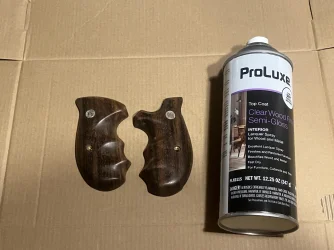I decided to refinish a set of combat stocks that I had previously done with polyurethane. Since I was gong to apply a factory correct lacquer finish, I had to remove the urethane. This was a refinish I did a couple years ago so it was completely cured and was a bear to get off. But once I did, I had a set of goncalo stocks ready for a new finish. The wood is very dark goncalo, just luck of the draw and original to the gun so they are keepers.
Starting with the prepped stocks, I started hitting them with light coats of Proluxe (formerly Deft) semi-gloss lacquer. Lacquer is correct for combat stocks and is just easy to use and very quick. Because of the carriers in lacquer it does not require sanding between coats like urethane and is pretty much run-free unless you go overboard. Lacquer with literally melt or soften the material applied previously to provide adhesion, but dries quickly as the carriers evaporate. Over a period of about 45 minutes I applied about 10 coats, usually about three at a time and yet when I went to apply the next round, the lacquer was already dry to the touch. The more coats, the slower the drying time as the underlying coats also soften.
Attached images show the progression. I could have waited a bit longer between coats and sanded the finish to fill any grain, pores or defects and obtain a smoother finish but I chose not to. I will likely do this at some point or just buff with a scoth-brite pad & wax. Regardless you can be done with the application of the finish in well under a day or in this case just about one hour.
Factory original (like), quick and easy.
Stripped of all finish:

Wet with acetone shows the approximate finished color:
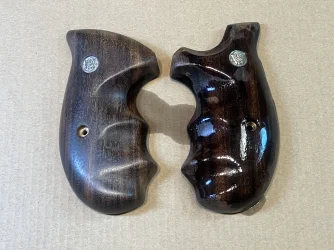
Five light coats of lacquer:

15 minutes later, dry to the touch
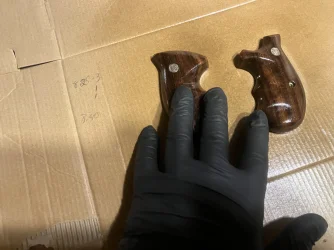
Three more light coats:

You can see how the new coat softens the previous coats

Flashlight can insure coverage or highlight defects:
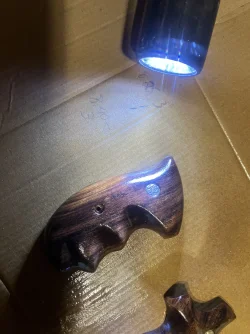
Under one hour, 10+ coats and dry to the touch:
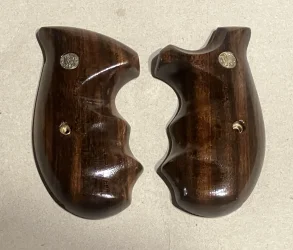
Starting with the prepped stocks, I started hitting them with light coats of Proluxe (formerly Deft) semi-gloss lacquer. Lacquer is correct for combat stocks and is just easy to use and very quick. Because of the carriers in lacquer it does not require sanding between coats like urethane and is pretty much run-free unless you go overboard. Lacquer with literally melt or soften the material applied previously to provide adhesion, but dries quickly as the carriers evaporate. Over a period of about 45 minutes I applied about 10 coats, usually about three at a time and yet when I went to apply the next round, the lacquer was already dry to the touch. The more coats, the slower the drying time as the underlying coats also soften.
Attached images show the progression. I could have waited a bit longer between coats and sanded the finish to fill any grain, pores or defects and obtain a smoother finish but I chose not to. I will likely do this at some point or just buff with a scoth-brite pad & wax. Regardless you can be done with the application of the finish in well under a day or in this case just about one hour.
Factory original (like), quick and easy.
Stripped of all finish:

Wet with acetone shows the approximate finished color:

Five light coats of lacquer:

15 minutes later, dry to the touch

Three more light coats:

You can see how the new coat softens the previous coats

Flashlight can insure coverage or highlight defects:

Under one hour, 10+ coats and dry to the touch:

Last edited:

